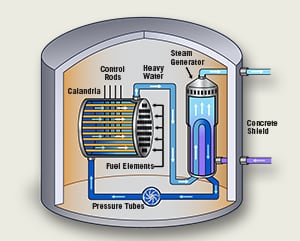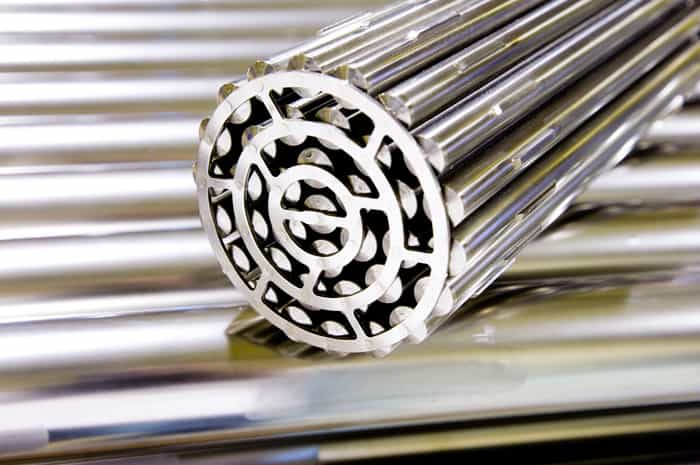The CANDU reactor design (or PHWR – Pressurized Heavy Water Reactor) has been developed since the 1950s in Canada, and more recently also in India. These reactors are heavy water cooled and moderated pressurized water reactors. Instead of using a single large reactor vessel as in a PWR or BWR, the nuclear core is contained in hundreds of pressure tubes. PHWRs generally use natural uranium (0.7% U-235) oxide as fuel, hence needs a more efficient moderator, in this case heavy water (D2O).
The reactor core is in a large tank called a calandria. There is a heavy water as the moderator in this tank. The calandria is penetrated by several hundred horizontal pressure tubes. These tubes form channels for the fuel. The fuel is cooled by a flow of heavy water under high pressure in the primary cooling circuit, reaching 290°C. The moderator in the tank and the coolant in the channels are separated. The hot coolant that leaves the channels goes to a steam generator, which in turn heats a secondary loop of water to steam that can run turbines and generator (as in the PWR).
-

The PHWR design.
Source: www.cameco.comThe PHWRs can be refueled while at full power, which makes them very efficient in their use of uranium (it allows for precise flux control in the core).
- The PHWRs use a natural uranium as fuel (in the form of ceramic UO2).
- The PHWRs produce more energy per kilogram of mined uranium than other designs, but also produces a much larger amount of used fuel per unit output.
- The PHWRs produce a much larger amount of used fuel per unit output. (due to low fuel burnup)
- Heavy water generally costs hundreds of dollars per kilogram, though this is a trade-off against reduced fuel costs.
- Since the unenriched spent fuel generated less decay heat, the spent fuel can be stored much more compactly.

Source: www.cameco.com